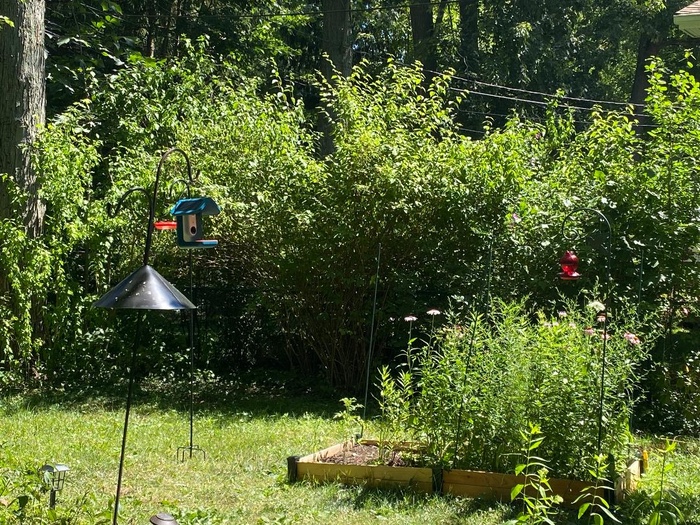
Does the natural world feel fleeting to you now? People are paying more attention. When we walk on trails, we do a lot more than walk; when we sit on our backyard deck, we do a lot more than sit. We plant native plants and let our lawns fill with dandelions and tall grasses. The more we know, the more environmentally aware we become.
Phone apps help. We don’t just say, “Is that the invasive plant that looks like a dandelion?” We take a photo and, in an amazing recent change in technology, our phones tell us that we need to pull the offending plant. Same thing with the birds — the Merlin app, even when we can’t see the birds, tells us what birds we hear. Before the official Ohio Bird Week, we spotted orange orioles, yellow goldfinches and Cape May warblers, but Merlin heard Magnolia warblers, warbling vireos and American redstarts. It was fascinating. The next day, March 8, we picked up the songs of Tennessee warblers, red-winged blackbirds, and grackles. Our “normal” birds — cardinals, robins, wrens, sparrows, finches, and bluejays — made a good showing during the migration time. Good thing we had Merlin; the trees had already filled in with leaves.
In mid-April in the Metroparks, fallen trees laid this way and that, with the feel of sadness and death, but the greening of the forest floor was beginning. As we walked, we called out the names of spring wildflowers. Coltsfoot. Virginia Bluebells. Bloodroot. Trillium. And what’s that? A photo and an answer: Dutchman’s Breeches. Oh yes. It was early for these appearances, and we knew it. The weather was marvelous, and we could be in the moment, but later, in the car, one of us said, “This is much too early, this spring.”

This year, we let our backyard lawn go until the end of May. We expanded our native plant garden to twice its previous size, taking advantage of the Metroparks’ native plant sale, and we now see lots of bees, butterflies and hummingbirds. We added a Bird Buddy feeder so we can see the birds close up and pay more attention to them, which prompted us to experiment with different kinds of seeds, suet, meal worms and hummingbird nectar. We’ve grown accustomed to the bunny living under our deck, the sparrows flying back and forth to the birdhouses as they feed the open mouths inside, the blue jays who splash in the birdbath and have made our yard their home, the squirrels munching on seed beneath the bird feeders, the way our dog Gracie stands in stillness with her nose moving. Just witnessing.
Although our backyard has been amazing, we’ve also observed the shorebirds in Berea’s wetlands, eagles in Lorain County, and herons along the Cuyahoga and Rocky Rivers. Turtles sunning on logs, frogs jumping into ponds with a plop. Velvety cattails, the smell of wet grass, the warmth of the sun. In Brecksville, walking south from Station Road Bridge in the Cuyahoga Valley, we hardly walked. More photos, more Merlin. More presence.
We are blessed with lots of open spaces in northeastern Ohio. Think about the 33,000-acre national park that’s accessible to all of us. With 2.9M visitors in 2022, Cuyahoga Valley National Park is the ninth most visited park in United States. We can walk, hike, kayak, bike, fish, horseback ride, or just sit and breathe in our own national park. We can listen to the sound of Brandywine Falls, find ice box cave at Virginia Kendall, or walk the ledges trailhead in Peninsula.
It’s an obsession, to see and know everything that’s going on. We give into the obsession by just sitting and listening, feeling cool breezes and the warm sun. The days are fleeting — two weeks later, the flowers will be different, the birds will be different. Nature asks us to see, hear, smell, touch, and feel. Enjoy, protect, and support it, while we can.
